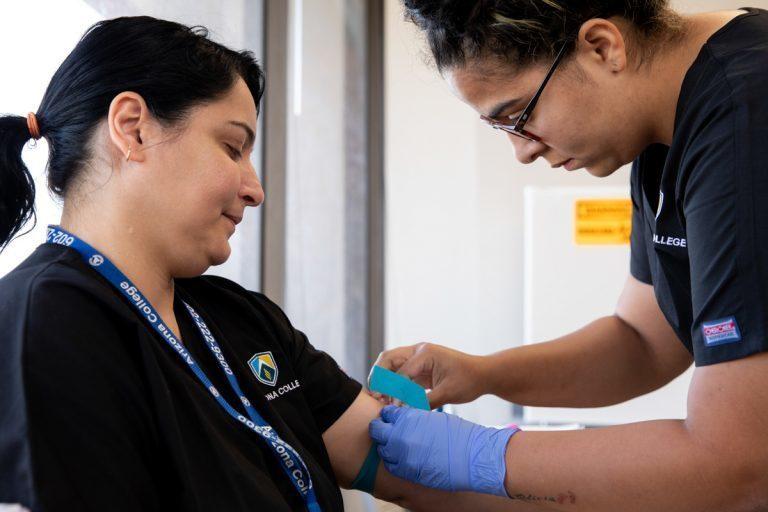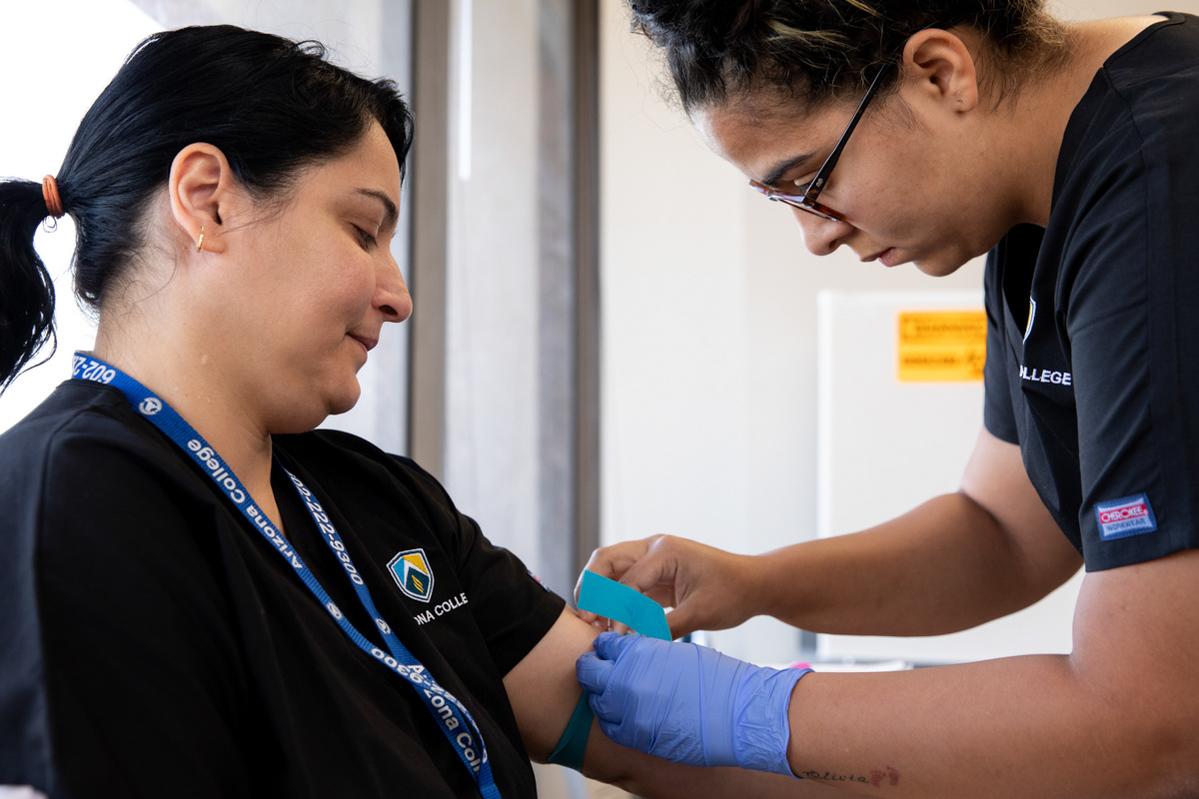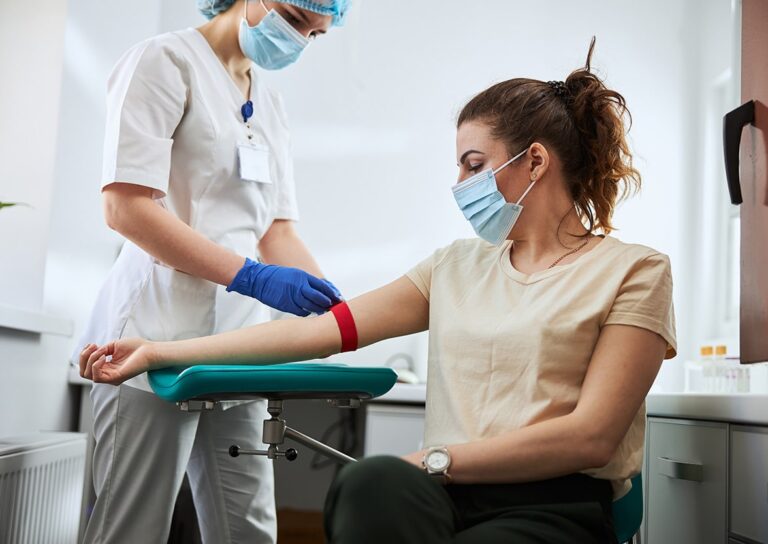Welcome to the fascinating world of Medical Assisting and Phlebotomy!
Welcome to the world of healthcare, where understanding nursing terms and glossary terms is a cornerstone of your education and practice, whether you’re enrolled in medical assistant school or already working in the medical assistant or phlebotomy field. These terms are the building blocks of effective communication and safe patient care. By mastering this vocabulary, you empower yourself with the ability to convey critical information clearly to colleagues and patients, ensuring everyone is on the same page in the complex healthcare environment.
Frequently Asked Questions Relating To A Career In Medical Assisting
Medical assistants in phlebotomy are responsible for drawing blood from patients for various medical tests and procedures. They also prepare and process specimens for laboratory testing.
Yes, medical assistants can perform venipuncture as long as they have received appropriate training and it is within their scope of practice in their specific state or region.
Yes, medical assistants are typically trained in phlebotomy, which includes drawing blood, as part of their education program.
Phlebotomy is a specific medical field focused on drawing blood from patients for medical testing. A medical assistant, on the other hand, is trained in a variety of clinical and administrative tasks, which can include phlebotomy.
If you’re already a certified phlebotomist and want to become a medical assistant, you would need to complete a medical assistant training program. Your previous experience and certification in phlebotomy may be beneficial during your training.
Obtaining a medical assistant-phlebotomist credential typically involves completing a training program that includes both medical assisting and phlebotomy, and then passing a certification exam.
Requirements can vary, but typically you must be 18 years or older and have a high school diploma or equivalent.
General Terms
Anatomy and Physiology: The study of the structure and function of the human body.
Capillary Puncture: A technique used to obtain a blood sample for laboratory testing by puncturing the skin, typically on the fingertip.
Clinical Laboratory Improvement Amendments (CLIA): Federal regulatory standards that apply to all clinical laboratory testing performed on humans in the United States.
Clinical Procedures: Procedures related to patient care, including taking and recording vital signs, medical histories, preparing patients for examination, drawing blood, and administering medications as directed by a physician.
CPR (Cardiopulmonary Resuscitation): An emergency procedure that combines chest compressions often with artificial ventilation in an effort to manually preserve intact brain function until further measures are taken to restore spontaneous blood circulation and breathing in a person who is in cardiac arrest.
Electrocardiography (ECG/EKG): A diagnostic tool that measures and records the electrical activity of the heart.
First Aid: The immediate care given to a person who has been injured or suddenly becomes ill.
Hematology: The branch of medicine that deals with diseases of the blood and blood-forming organs.
Infection Control: Practices and procedures that prevent the spread of infection, particularly in a healthcare setting.
Medical Assistant (MA): A healthcare professional who supports the work of physicians and other health professionals, usually in a clinic setting. MAs perform both clinical and administrative tasks.
Medical Billing and Coding: The process of translating healthcare services into billing codes to be submitted for reimbursement.
Medical Ethics: The discipline of evaluating the merits, risks, and social concerns of activities in the field of medicine.
Medical Terminology: The specific language used by health care professionals for accurate and efficient communication.
Patient Education: The process by which health professionals and others impart information to patients and their caregivers that will alter their health behaviors or improve their health status.
Patient Privacy (HIPAA): Refers to the Health Insurance Portability and Accountability Act, which provides data privacy and security provisions for safeguarding medical information.
Pharmacology: The study of drugs, their properties, and how they interact with the body.
Phlebotomy: The practice of drawing blood from patients and taking the blood specimens to the laboratory to prepare for testing.
Specimen Collection: The process of collecting a sample of blood, urine, or other tissues for laboratory testing.
Universal Precautions: An approach to infection control to treat all human blood and certain human body fluids as if they were known to be infectious for HIV, HBV and other bloodborne pathogens.
Venipuncture: The process of puncturing a vein, usually with a needle, for the purpose of drawing blood.

Medical Assistant and Phlebotomy Tools and Equipment
Understanding the terminology related to these tools is essential, whether you’re a student in a medical assistant program or already practicing in the field. Familiarity with this nomenclature empowers you to confidently operate and maintain the equipment essential to patient care. Join us as we explore the world of healthcare tools and equipment terminology and unlock the numerous benefits it offers in your professional journey.
Alcohol Wipes: Used to clean the area where a needle will be inserted.
Automated External Defibrillator (AED): A portable device that checks the heart rhythm and can send an electric shock to the heart to try to restore a normal rhythm.
Bandages: Used to cover the puncture site after drawing blood.
Biohazard Bags: Used for the disposal of materials that have come into contact with bodily fluids.
Centrifuge: A machine that separates fluids of different densities (like blood) for analysis.
Electrocardiogram (EKG/ECG) Machine: A machine that records the electrical activity of the heart.
Gauze: Used to help stop bleeding from a needle stick injury.
Gloves: Personal protective equipment used to protect the hands when handling blood and other bodily fluids.
Lancet: A small, sharp instrument used for capillary blood sampling.
Microscope: An instrument used to see objects that are too small for the naked eye.
Needles: Used for drawing blood. They come in various sizes depending on the patient’s vein size.
Ophthalmoscope: A device used to examine the eyes.
Otoscope: A device used to look into the ears.
Phlebotomy Chair: A chair designed for patient comfort and safety during blood draw procedures.
Phlebotomy Tray: A tray used to organize and carry phlebotomy supplies.
Sharps Container: A hard plastic container that is used to safely dispose of hypodermic needles and other sharp medical instruments.
Sphygmomanometer: A device used to measure blood pressure.
Stethoscope: A medical instrument used for listening to the sounds generated within the body.
Syringes: Used in conjunction with a needle to draw blood.
Thermometer: A device used to measure body temperature.
Tourniquet: A device used to control venous and arterial circulation to an extremity for a period of time.
Vacutainer: A blood collection system that uses vacuum tubes to draw blood directly from the patient’s vein into the tube.

Common Acronyms
In the healthcare world, where speed, precision, and clarity are paramount, understanding these acronyms is not just helpful but essential. Whether you’re a student in a medical assisting program or an experienced phlebotomist, mastering this specialized language ensures that you can efficiently communicate with colleagues, interpret medical records, and provide high-quality care. These acronyms serve as shortcuts to complex concepts, streamlining your work and reducing the potential for misunderstandings.
AED: Automated External Defibrillator – A portable device that checks the heart rhythm and can send an electric shock to the heart to try to restore a normal rhythm.
AHA: American Heart Association – A non-profit organization in the United States that funds cardiovascular medical research and provides education and advocacy on heart disease and stroke prevention.
BLS: Basic Life Support – A level of medical care which is used for victims of life-threatening illnesses or injuries until they can be given full medical care at a hospital.
CBC: Complete Blood Count – A blood test used to evaluate your overall health and detect a wide range of disorders, including anemia, infection and leukemia.
CLIA: Clinical Laboratory Improvement Amendments – Federal regulatory standards that apply to all clinical laboratory testing performed on humans in the United States.
CMA: Certified Medical Assistant – A medical assistant who has received certification from an accredited organization, demonstrating a certain level of knowledge and competence.
CPR: Cardiopulmonary Resuscitation – An emergency procedure that combines chest compressions often with artificial ventilation in an effort to manually preserve intact brain function until further measures are taken to restore spontaneous blood circulation and breathing in a person who is in cardiac arrest.
CPT: Current Procedural Terminology – A medical code set that is used to report medical, surgical, and diagnostic procedures and services to entities such as physicians, health insurance companies and accreditation organizations.
EKG/ECG: Electrocardiogram – A test that measures the electrical activity of the heartbeat.
EMR: Electronic Medical Record – A digital version of a patient’s paper chart. EMRs are real-time, patient-centered records that make information available instantly and securely to authorized users.
HBV: Hepatitis B Virus – A serious liver infection caused by the hepatitis B virus that’s easily preventable by a vaccine.
HIPAA: Health Insurance Portability and Accountability Act – A US law designed to provide privacy standards to protect patients’ medical records and other health information.
HIV: Human Immunodeficiency Virus – A virus that attacks cells that help the body fight infection, making a person more vulnerable to other infections and diseases.
ICD: International Classification of Diseases – A system used by healthcare providers to classify and code all diagnoses, symptoms, and procedures.
MA: Medical Assistant – A healthcare professional who supports the work of physicians and other health professionals, usually in a clinic setting.
OSHA: Occupational Safety and Health Administration – A federal organization (part of the Department of Labor) that ensures safe and healthy working conditions for Americans by enforcing standards and regulations.
PPE: Personal Protective Equipment – Safety barriers used to protect the skin, clothing, mucous membranes, and airways from infectious agents.
RMA: Registered Medical Assistant – A credential that signifies a medical assistant’s competency and often leads to higher paying job opportunities.
Ready to Pursue a Healthcare Career? Contact Us To Get Started.
Guide to Becoming a Medical Assistant with Phlebotomy Skills
Ready to make a difference in healthcare? Explore the path to becoming a medical assistant with phlebotomy skills today.
Learn about our Medical Assistant Program.
How do I get a medical assistant certification?
How do I get a phlebotomist certification?
What medical assistant courses do I need to take?
How do I start my healthcare career?





